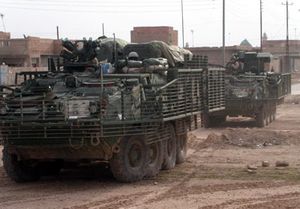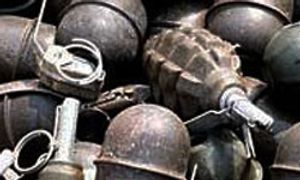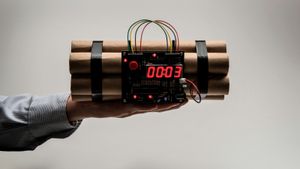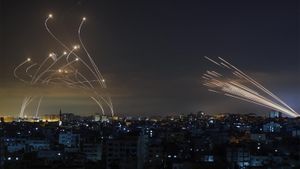RPG Basics
At its core, a rocket-propelled grenade can be thought of as something like a rocket and mortar hybrid. It's an explosive projectile weapon with two separate parts; the grenade and a device for launching it. In many cases the launcher can be reloaded, reducing the overall cost at the expense of increased weight. Weight is, of course, important if you have to carry the weapon to your target, but cost can also be important if your army is small and low on resources.
The launcher is basically a tube that rests on the operator's shoulder. It is open at both ends, and a projectile with a small rocket engine is affixed to the front end of the tube. Firing is usually accomplished through a trigger mechanism, at which point the grenade's rocket engine is activated and a short, high-powered burst of ignited gases launches the grenade for a short distance - maybe between 500 to 1,000 feet (150 to 300 meters) depending on the target and the skill of the operator. An RPG operator should be aware of what's immediately behind him; the exhaust gases will flare out behind the device in a cloud of searing hot smoke.
Advertisement
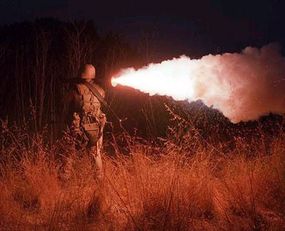
The projectile itself travels toward the target, usually exploding upon impact. However, some modern grenades use an electronic fuze system instead of a mechanical or chemical fuze so that the projectile will detonate after a particular time-span has elapsed.

Most RPGs follow this basic operational design, although different models feature various refinements and modifications. Some are designed to be most effective against troops; some are designed to work well against armored vehicles and tanks, launching high explosive anti-tank projectiles. The M-72 Light Anti-tank Weapon (M-72 LAW) is popular with American forces, and features a pre-packaged rocket which is fired and then discarded. The M136 AT-4 also features a disposable launch device, and its 820 feet (250 meter) range and re-usable night-sight bracket has led to it becoming the U.S. Army's principal light anti-tank weapon.
Although not favored by the U.S. Army, by far the most common rocket-propelled grenade in use today is the RPG-7, a Russian designed weapon closely related to the German Panzerfaust anti-tank weapon, dating from World War II. Like missiles, these grenades have a built-in rocket propulsion system. Let's take a closer look at the RPG-7.


